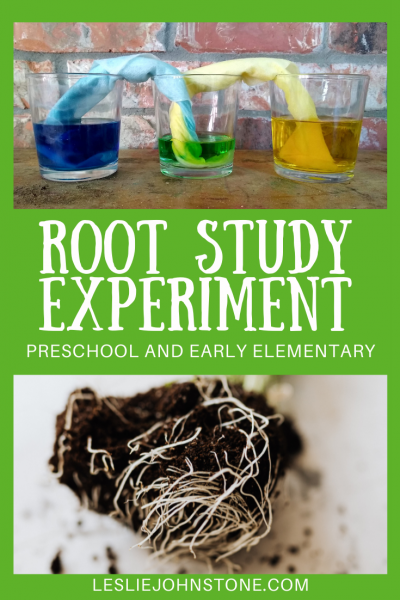This month we are spending even more time outside as we cultivate, create, and get our hands dirty in the garden finding all sorts of treasures from worms to bunnies that like to nibble on lettuce leaves; this month is all about Garden Treasures with our Experience Early Learning box!
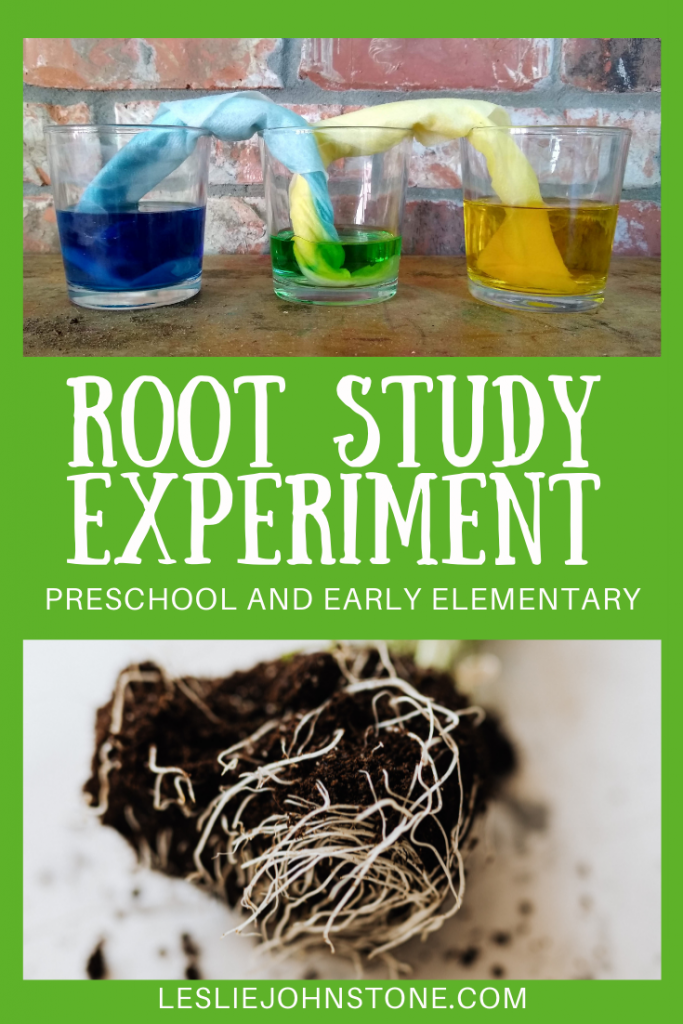
When we talk about doing experiments with children, sometimes that can bring a lot of fear! We worry that it has to be elaborate or memories (or nightmares) of our 5th grade science fair some flooding back! These thoughts keep us from setting up experiments; however, it is so easy and usually the highlight of my littles day! All you need to start with is a…
Question
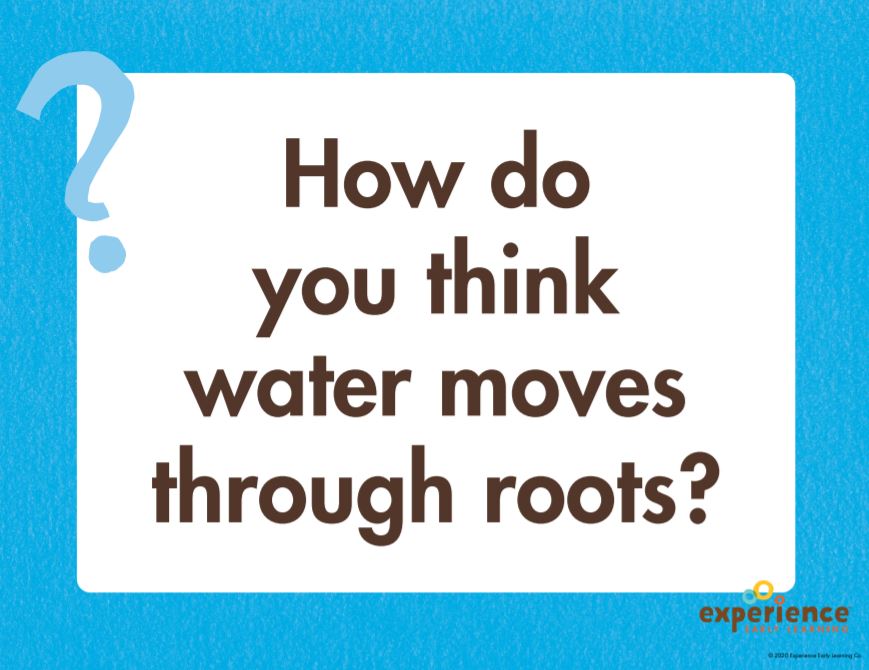
Our Experience Early Learning box provides several experiments to do like this EVERY. WEEK. The kids get to see the scientific process in action so much thanks to our little box. Since we are digging for treasures in the garden, we are exploring how roots work.
Materials
Okay. So you have your question. Now what? Experience Early Learning does such a great job suggesting experiments with materials we have right in my home! No added trip to the store!
- 2 paper towels
- 3 cups (glass or plastic as long as you can see through it)
- 2 different colors of food coloring (I used blue and yellow)
- water (I used 1 cup in each glass)
- 2 popsicle sticks or spoons to stir
- A quiet place where the experiment can sit undisturbed but easy to observe
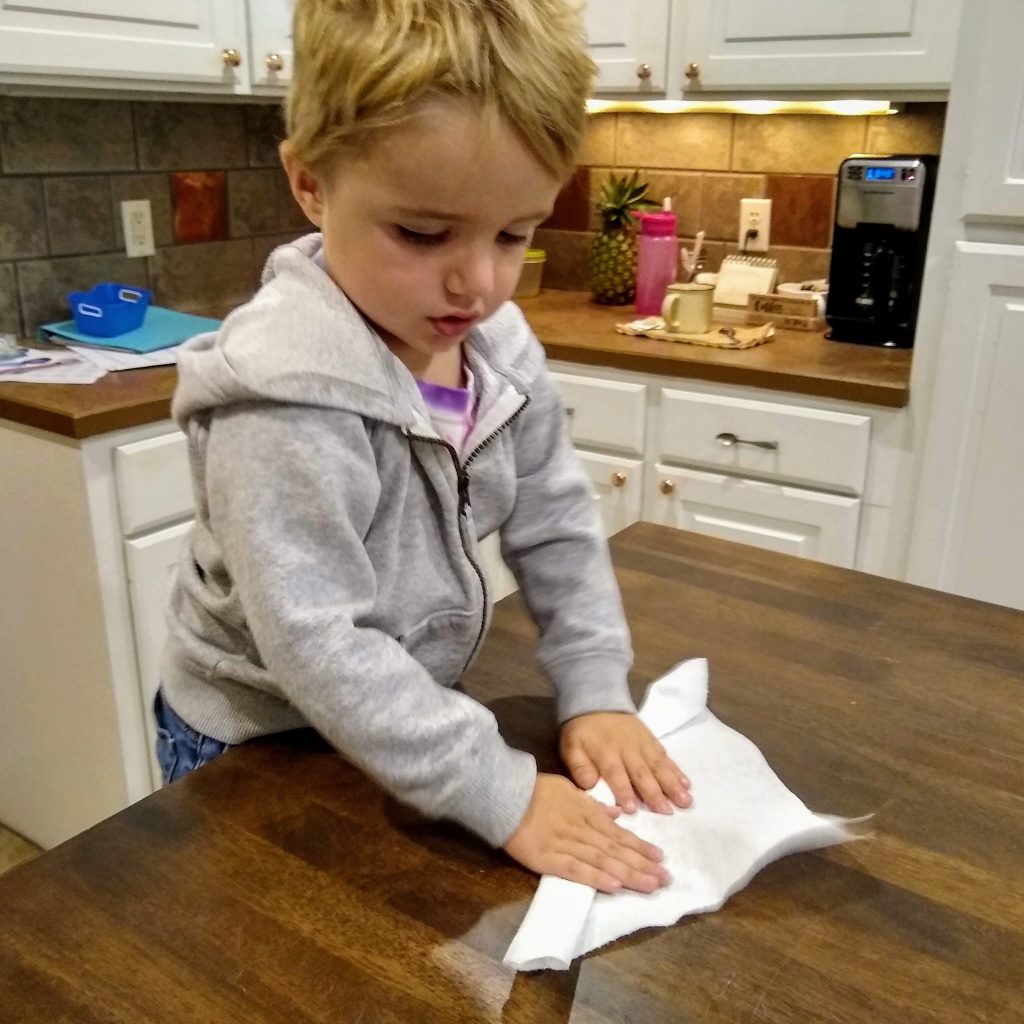
Procedure
- Set out your materials
- Roll your 2 paper towel sheets so that each becomes long tight tubes.
- Fill 2 of the 3 glasses with 1 cup of water each.
- Add equal amounts of food coloring to each glass of water. We added 3 drops to each glass. Then the kids stirred it with the popsicle sticks.
- Twist the 2 paper towels together on one end leaving the other 2 loose. It will look like the letter Y.
- Place your 3 glasses side by side with the empty glass in the middle.
- Place the twisted part of the paper towel into the middle empty glass.
- Place one paper towel loose end into one of the colors.
- Place the other paper towel loose end into the other color.
- Make a hypothesis, wait, and observe throughout the day.
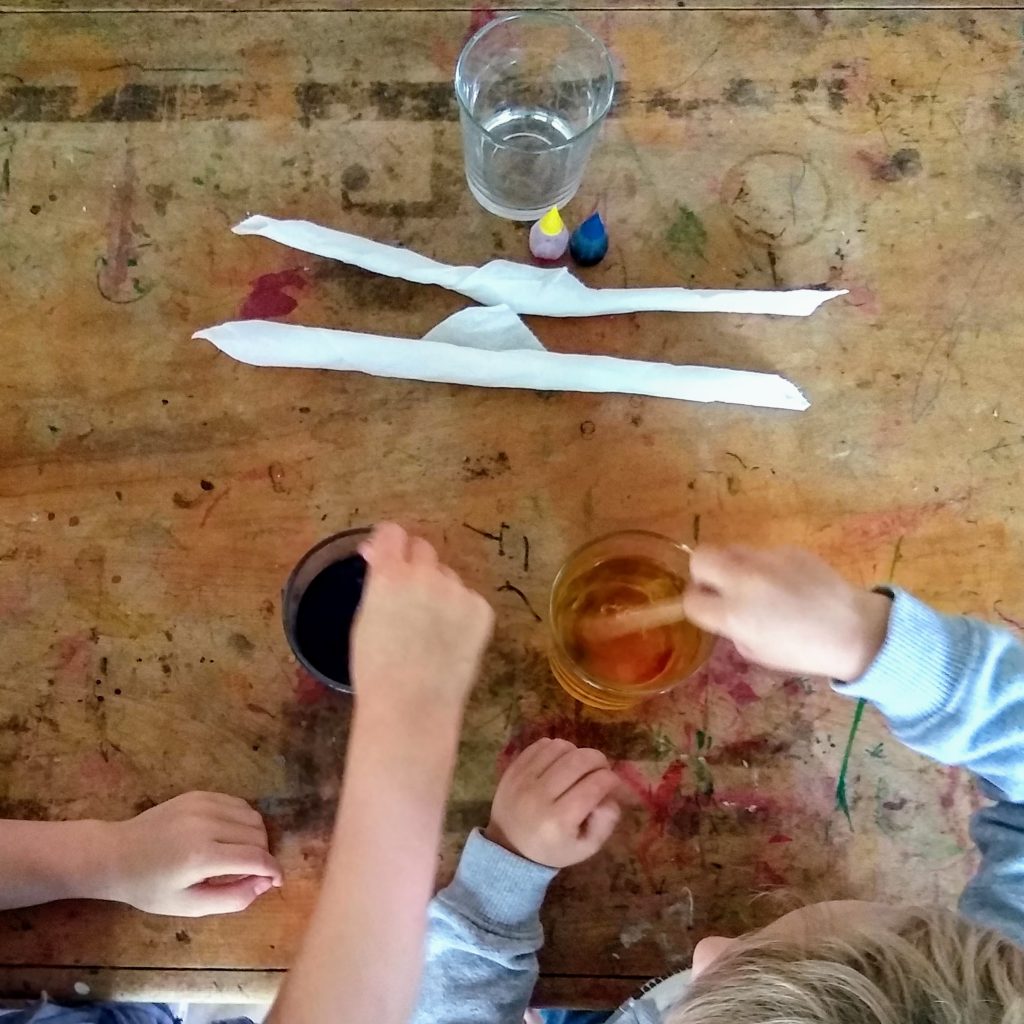
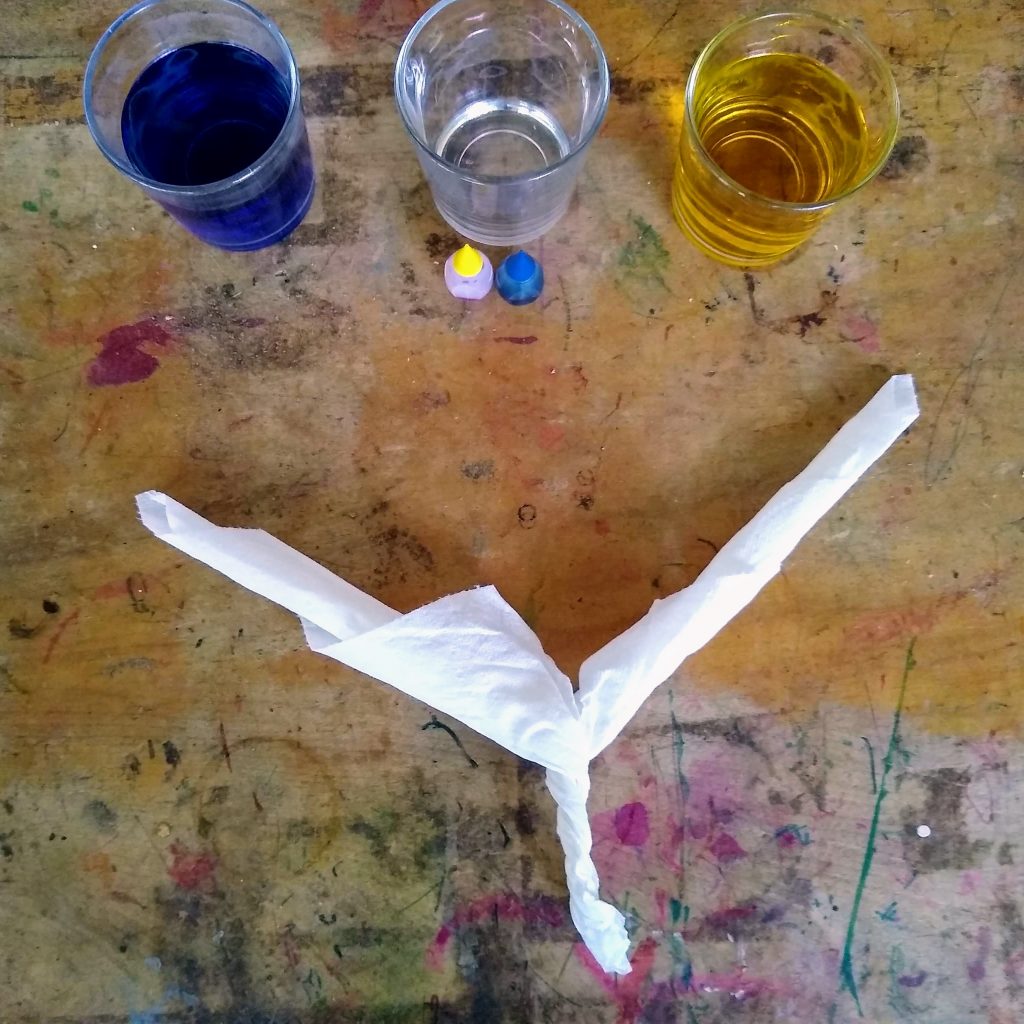
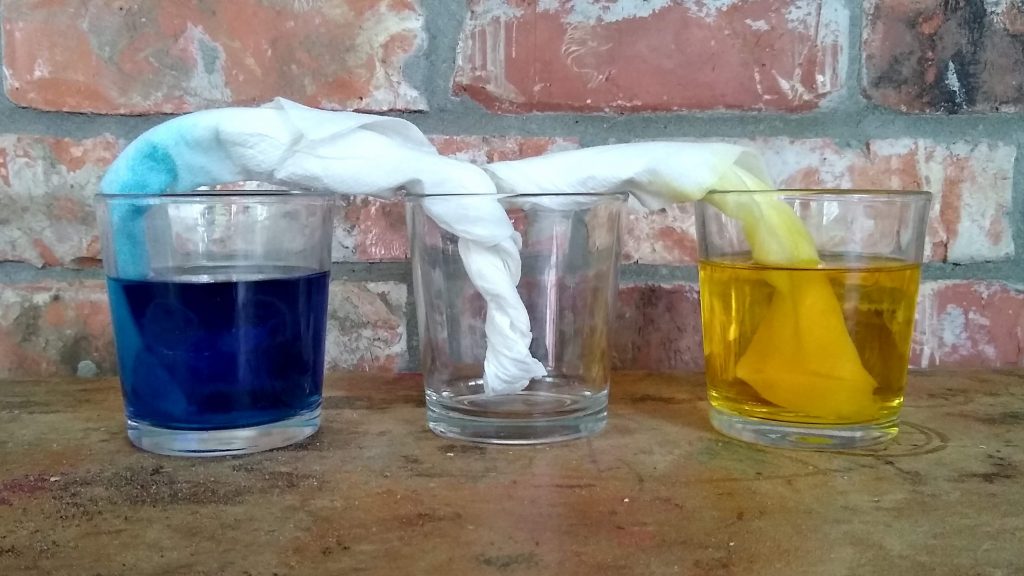
Hypothesis
As soon as we set up the experiment, my kids had a much easier time coming up with their hypothesis. I try to teach them to say “I think…because…” when creating their hypothesis. I used the same method when I taught 6th grade and 4th grade science. I just love hearing their “Ah ha” moments! Here is a little video of their thinking right after we set up the experiment:
Observations
We set up our experiment at 9:00 am. We checked it at 9:15. Then we had some errands and returned at 11:00. Not only did we find that the middle glass had turned green (hypothesis was CORRECT!) but it had also soaked and TRANSFERRED tons of water into the middle glass! That was totally unexpected!
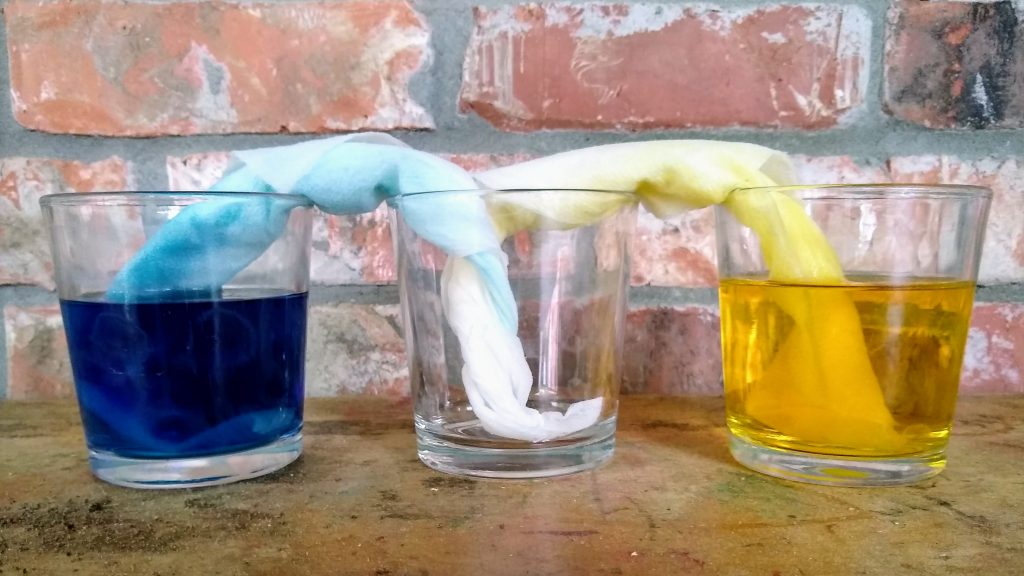
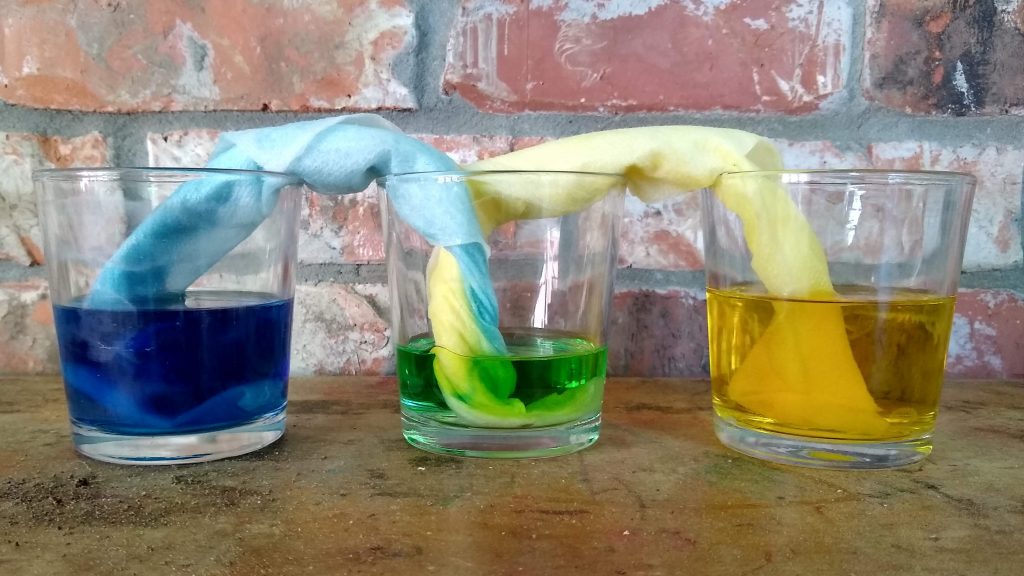
Conclusion
This experiment not only brought home the point that roots soak water and nutrients but that they also TRANSFER it to the middle or stem of the plant. So cool! The kids were so excited to share their experiment with their dad over lunch and tell all about roots, what they do, and how they know!
I love that they love to learn and I adore learning right alongside them.
